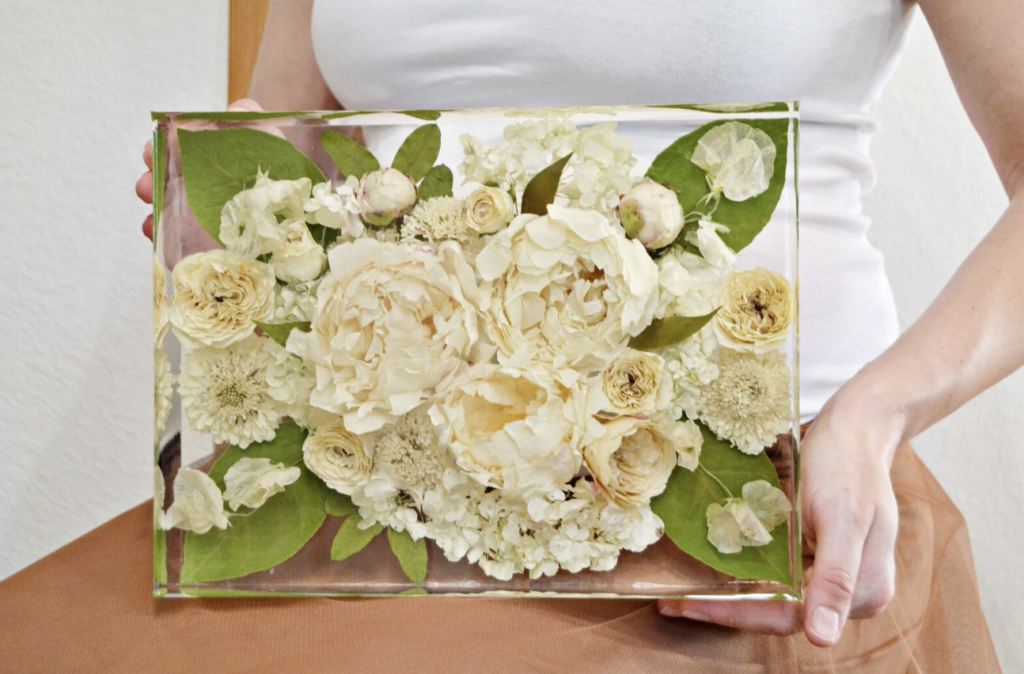How Resin Bouquet Preservation Keeps Wedding Flowers Forever
Your wedding flowers are more than just a pretty arrangement—they’re a piece of your love story! While the blooms naturally fade, there’s a wonderful way to ensure your flowers last forever: resin bouquet preservation. This incredible process transforms your bouquet into a timeless piece of art, allowing you to enjoy its beauty for years to come. Curious how it works and why it’s such a great choice? Let’s dive into the magic of resin bouquet preservation!

What is Resin?
Resin is a crystal-clear liquid material that hardens into a glass-like finish when it cures. In the context of floral preservation, epoxy resin is the most commonly used type. It’s durable, transparent, and has the ability to preserve delicate flowers while maintaining their natural beauty. Once fully cured, the resin creates a protective shell around the flowers, ensuring they remain as vibrant and intact as possible for years to come.
The Process of Preserving Flowers in Resin
The process of preserving wedding flowers in resin involves multiple steps that require careful attention to detail to achieve the perfect result. Here’s an overview of how it’s done:
Flower Preparation
The first step in resin preservation is preparing the flowers. Fresh flowers need to be dried completely to ensure they hold their shape and color during the resin process. Drying methods vary, but air drying and silica gel drying are two popular techniques. Silica gel is often used because it helps preserve the flowers’ color and structure more effectively.
Once the flowers are fully dried, they are carefully arranged in the desired design. This is a crucial step, as the arrangement will be permanently encased in resin, so every detail matters. Brides often choose specific parts of their bouquet, like the central flowers or a mix of blooms and greenery, to create a balanced and beautiful design.
Layering the Resin
Next, resin is mixed and poured into a mold or frame. Resin is typically applied in layers to prevent bubbles and ensure a smooth finish. The first layer acts as the base, and after it cures slightly, the flowers are carefully placed into the resin.
This layering process continues, with each subsequent layer of resin encasing more of the flowers until they are fully submerged and secured. This method ensures that the flowers are preserved in three dimensions, maintaining their shape and natural beauty.
Curing
Once the flowers are encased in resin, the piece is left to cure. Curing allows the resin to harden and set fully. Depending on the type of resin used, this can take anywhere from 24 to 72 hours. During this time, the resin becomes clear and solidifies, creating a protective barrier around the flowers.
Final Touches
After the resin has fully cured, the preserved flowers are polished and smoothed to achieve a flawless, glass-like surface. Any sharp edges are sanded down, and the final piece is often coated with a protective finish to enhance its shine and durability.
For more information on preserving wedding flowers, visit The Knot or check out our article on choosing the right flowers for preservation.